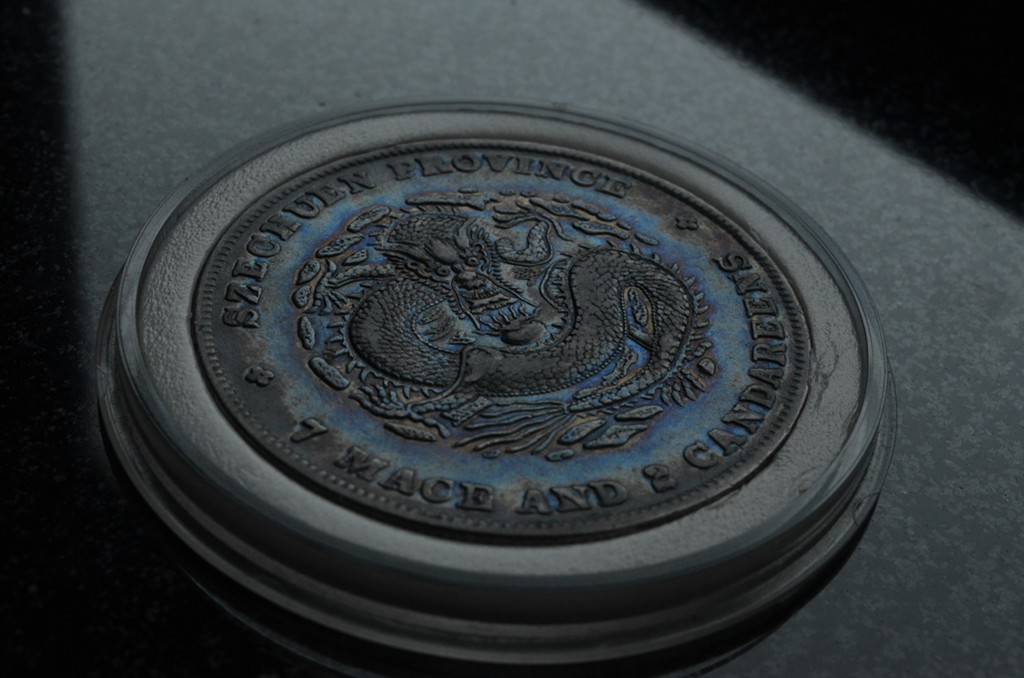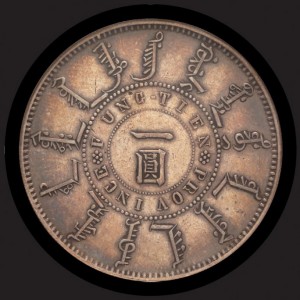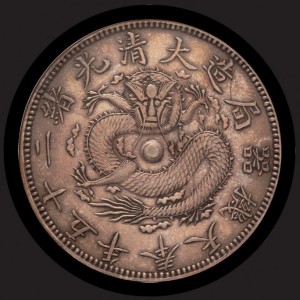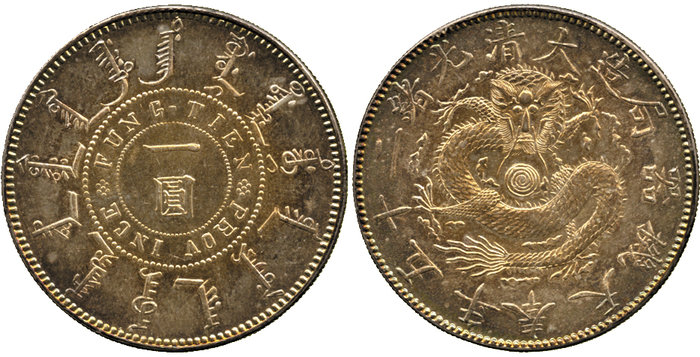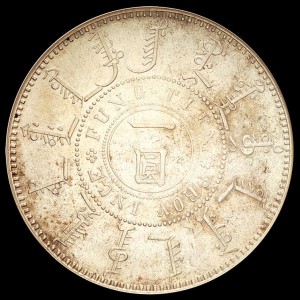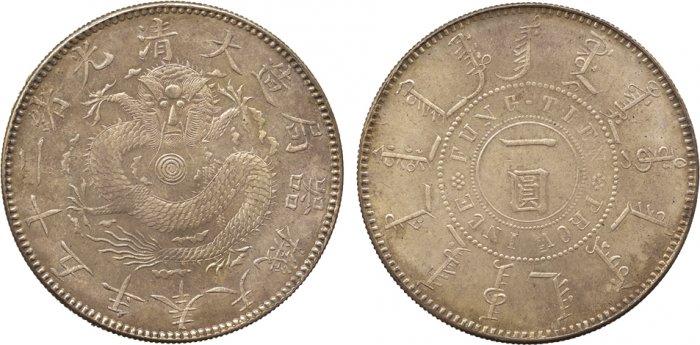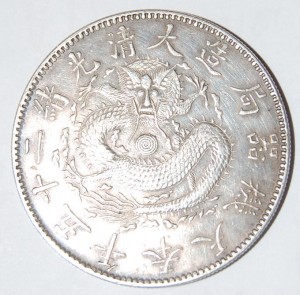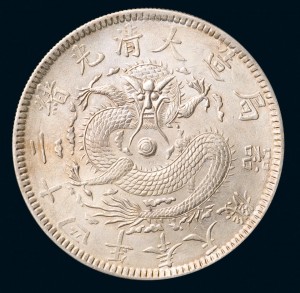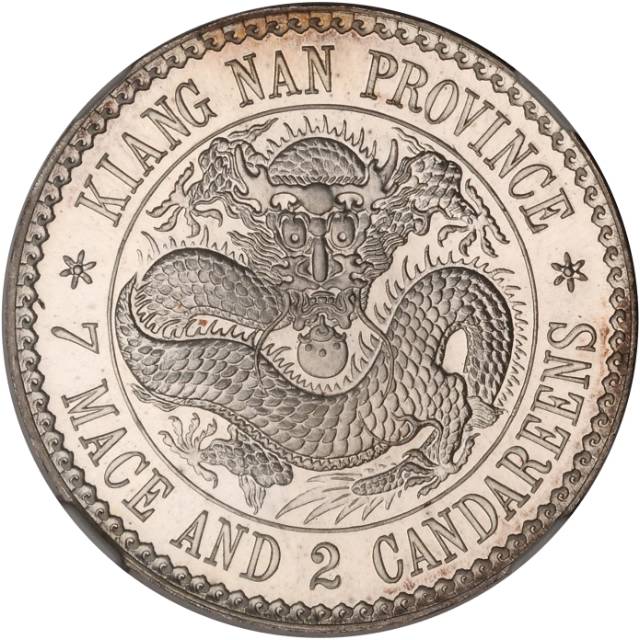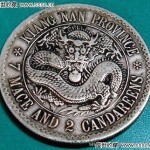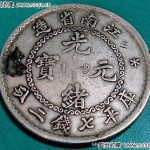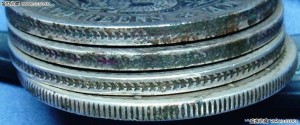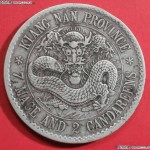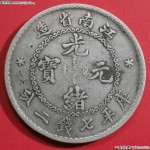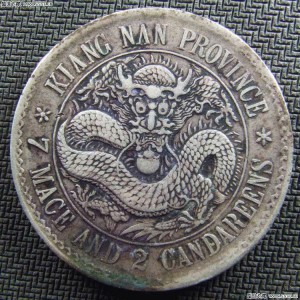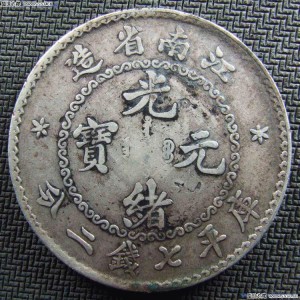I recently acquired a new Chinese coin, struck over a century ago at the Fengtien arsenal mint in the nowadays Shenyang (沈阳) city. It is now one of the few cities minting coins for the People’s Bank of China, along with Shanghai and Shenzhen. Today one of the biggest cities of China and an industrial powerhouse, Shenyang can trace the beginning of its transformation in a heavy industry titan back to the establishment of the Fengtien machine bureau (奉天机器局) in the late Qing era.
The Ancestor of the Shenyang Mint: the Fengtien Machine Bureau
Created in 1897 at the instigation of the General Iktangga (依克唐阿), governor of the Fengtien province, the bureau was destined to modernize the provincial coinage. An early set of dies was commissionned from the Anqing (安庆) mint in Anhwei (安徽), and German-made steam-powered machinery were brought from Tianjin. The early test issues using the An Hui dies were denominated in maces and candareens, and were designed after the Kwantung dollar. With the success of the Peiyang arsenal dollars, subsequent issues were however redesigned and the first emission meant for circulation in 1898 features a reverse bearing the characteristic circular manchu writings in the style of the contemporary Beiyang coins.
The last emission, in 1899, has a very similar design. As far as I know, three dies were used for the 25th year of Guang Xu series. The coin I bought is of the first type, as seen below:
The first set of die used has a single dotted ring around the denomination on the reverse (单圈版 in Chinese). The reverse has an obvious error in the typography of the province name, with a huge empty space between the F and U of FUNG TIEN. The strike is also noticeably weak from the G to the T. On the obverse, this die is very different from the subsequent ones. The dragon face is beautiful, with some relief on the sides of the dragon nose and a large, “smiling” mouth. The fireball at the center is ornamented with a wide, incomplete spiral probably resulting from a weak strike.
The second strike features a new dragon design; the reverse issues were also partially fixed:
The province name on the reverse is now correctly typographied, but the strike is still weak on the area from the G to the T. The new dragon design is very different from the previous issue, with a flatter face and a thinner mouth. The spiral on the fireball is complete this time, running all the way to the center.
The last emission tries again to correct the problems of the reverse, keeping the new dragon design.
As seen here, the G and T are indeed slightly stronger, but the end of “TIEN” is weaker, while it was crisp in the previous strikes… It seems that like the Kiangnan mint, the early Shenyang mint had troubles with the die adjustement and thus produced weakly struck coins.
A solid circle was added around the denomination, inside the inner dotted circle.
This strike is known as the “Linear circle within dotted circle” die, or 双圈版 in Chinese.
After this third strike, the mint machinery was seized by the tsarist Russian army and the Shenyang machine bureau was burned down… The province of Fengtien (nowadays Liao Ning) was indeed going through dark times. Already the theater of the first Sino-Japanese war in 1895, it was then the scene of the conflict between the Russians controlling the leased territory of Liao Tung, and the Japanese army, leading to the Russo-Japanese war. The mint at the Shenyang machine bureau was briefly brought back online in 1903 after years of reconstruction slowed down by the Boxer rebellion.
Eventually, the province fell under Japanese control, later becoming part of the Manchukuo puppet state. The Japanese army and investors continued to develop heavy industries in the region, furthering the move toward automatization that had begun in 1897 with the creation of the Fengtien machine bureau.
Beware of the Forgeries !
As usual, if a coin is rare, a lot of fakes tend to surface around. The example below is interesting :
The fake coin mixes happily the chinese calligraphy of the 1898 coin with the 1899 first dragon design, except for the fireball which has a complete spiral…
The “Lao Kiang Nan” (老江南) silver coin is one of the most sought after chinese dragon dollars. The Heaton Mint at Birmingham was commissioned in 1897 to produce a series of five silver denominations for the Nanking Mint. Upon completion, a small number of proof strikes along with sets of dies were shipped to the mint in Nanking. After their arrival the mint began production using the original Heaton Mint design, the only modification being the addition of a security edge.
The first set minted by the Nanking mint for circulation, and the scarcest, has a reeded edge. The english legend has some distinctive differences: the weak crossbars of the “A” in “KIANG NAN” make them look like inverted “V”. Also, the calligraphy of the character 省 on the reverse was modified (the top of the 目 part of the character is open).
Subsequent strikes used an ornamented edge; this type is called 人字齿 or 人字边 by Chinese collectors, due to the pattern. The Lao Kiang Nan with an ornamented edge are far more common, and less expensive. You can see below a comparison of the edges of three ornamented edge Lao Kiang Nan, and one reeded edge:
Amongst the ornamented edge strikes, there is few known die differences. Even “common” Lao Kiang Nan coins are still quite scarce!
***
The ornamented edge Lao Kiang Nan is closer to the original design from the Heaton mint: the english lettering is identical, but the Chinese calligraphy used is the same than on the reeded edge. This is the most commonly found type of Lao Kiang Nan.
An early type of ornamented edge Lao Kiang Nan is much scarcer, with a reverse identical to the original Heaton design. It is called 人字齿目省 in China.
It is difficult nowadays to find uncirculated, even XF grade Lao Kiang Nan silver coins. Beautiful genuine coins are hoarded by collectors, so the market is saturated by fake or low grade coins. Outside of auction houses, finding a good looking reeded edge Lao Kiang Nan can be quite a challenge. The value of Qing era Chinese silver coins has soared in the recent years, and as one of the most coveted dragon dollar, the Lao Kiang Nan is no exception: an XF-45, uncleaned, reeded edge Lao Kiang Nan can be easily sold for 5000€.
